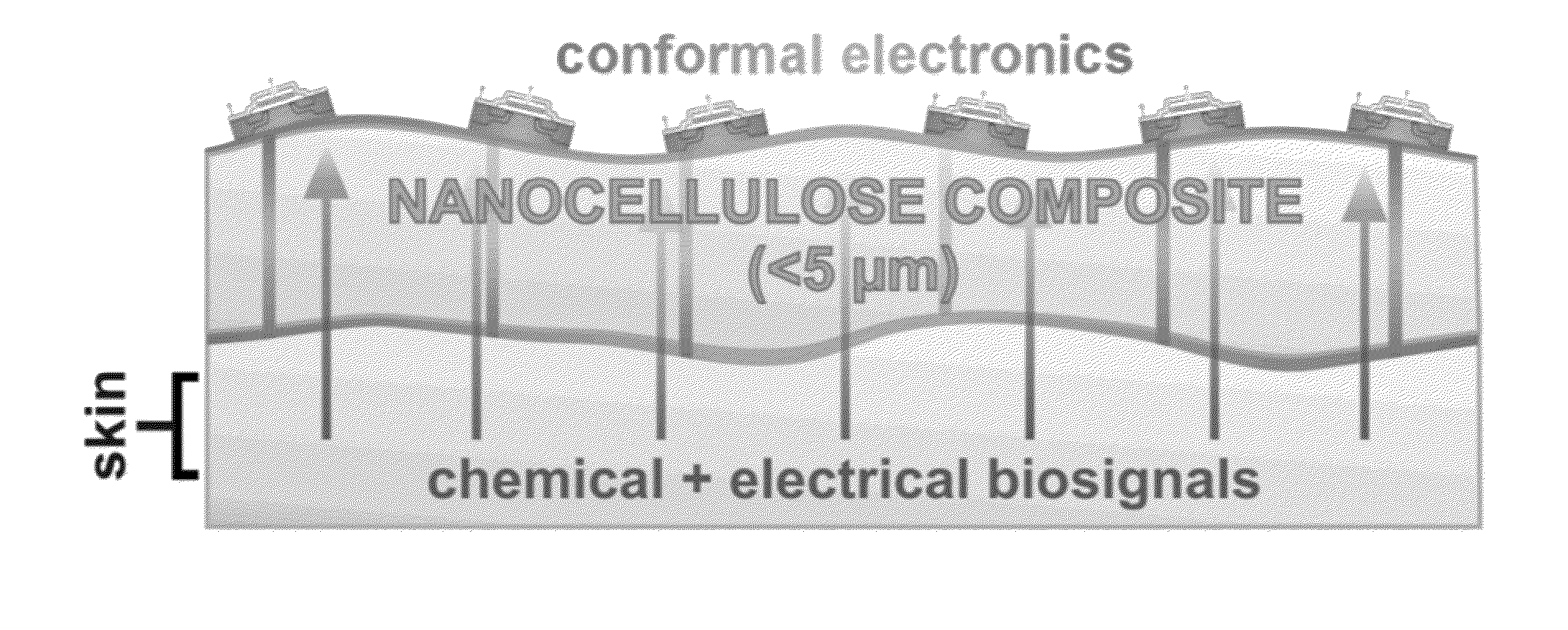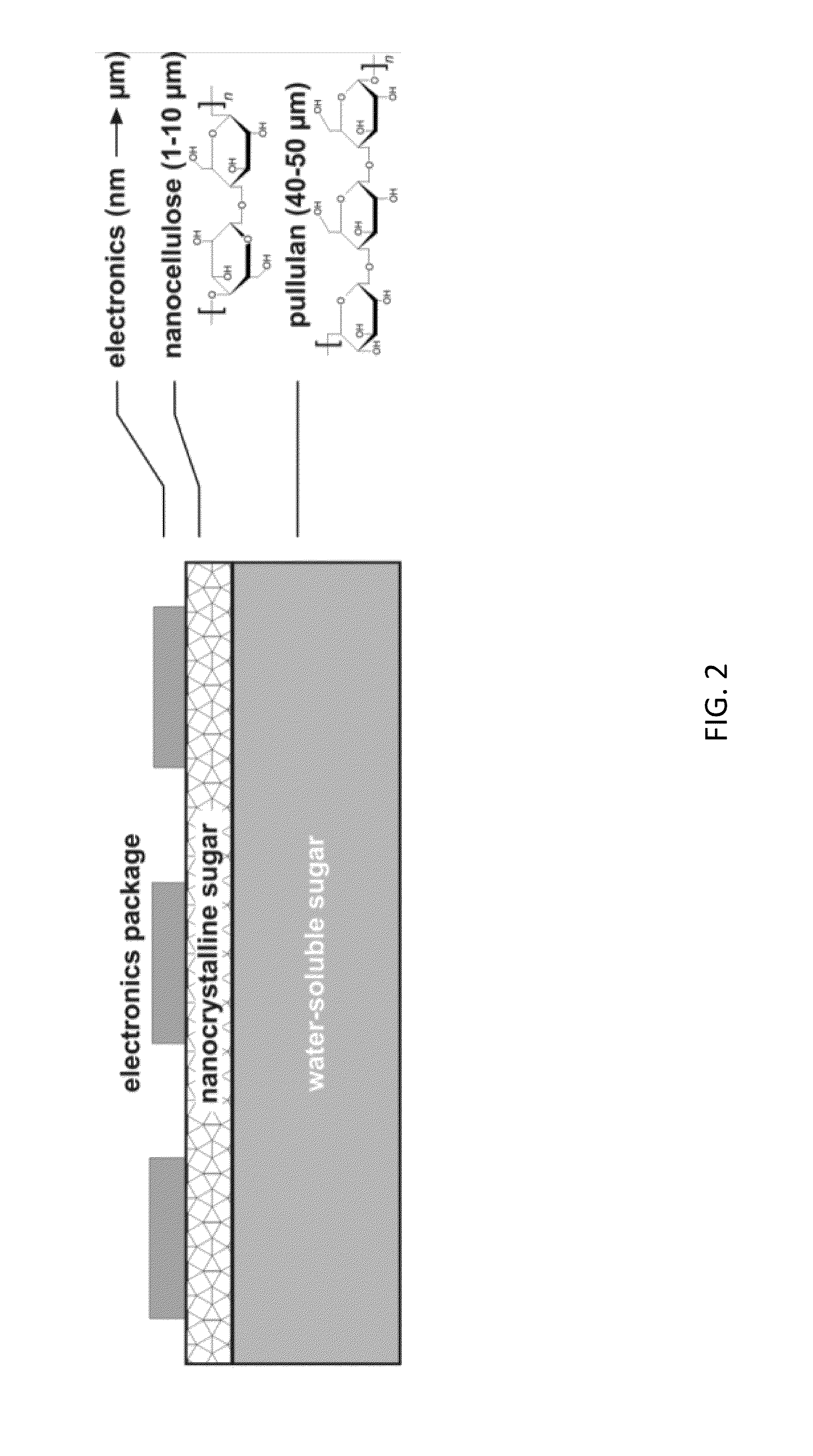Nanocellulose and Nanocellulose Composites as Substrates for Conformal Bioelectronics
a bioelectronic and nanocellulose technology, applied in the field of nanocellulose and nanocellulose composites as substrates for conformal bioelectronics, can solve the problems of high aqueous swelling, high thermal and chemical stability, and high thickness, and achieve the effect of reducing the thickness of the substrate and reducing the cost of production
- Summary
- Abstract
- Description
- Claims
- Application Information
AI Technical Summary
Benefits of technology
Problems solved by technology
Method used
Image
Examples
Embodiment Construction
Definitions
[0021]Before describing the present invention in detail, it is to be understood that the terminology used in the specification is for the purpose of describing particular embodiments, and is not necessarily intended to be limiting. Although many methods, structures and materials similar, modified, or equivalent to those described herein can be used in the practice of the present invention without undue experimentation, the preferred methods, structures and materials are described herein. In describing and claiming the present invention, the following terminology will be used in accordance with the definitions set out below.
[0022]As used in this specification and the appended claims, the singular forms “a”, “an,” and “the” do not preclude plural referents, unless the content clearly dictates otherwise.
[0023]As used herein, the term “and / or” includes any and all combinations of one or more of the associated listed items.
[0024]As used herein, the term “about” when used in co...
PUM
| Property | Measurement | Unit |
|---|---|---|
| thickness | aaaaa | aaaaa |
| widths | aaaaa | aaaaa |
| thick | aaaaa | aaaaa |
Abstract
Description
Claims
Application Information
 Login to View More
Login to View More - R&D
- Intellectual Property
- Life Sciences
- Materials
- Tech Scout
- Unparalleled Data Quality
- Higher Quality Content
- 60% Fewer Hallucinations
Browse by: Latest US Patents, China's latest patents, Technical Efficacy Thesaurus, Application Domain, Technology Topic, Popular Technical Reports.
© 2025 PatSnap. All rights reserved.Legal|Privacy policy|Modern Slavery Act Transparency Statement|Sitemap|About US| Contact US: help@patsnap.com



